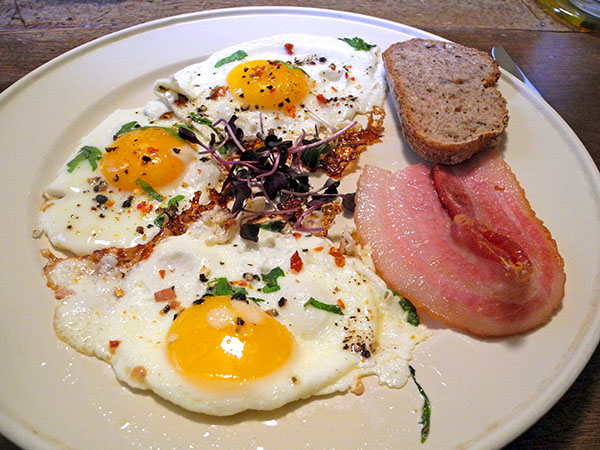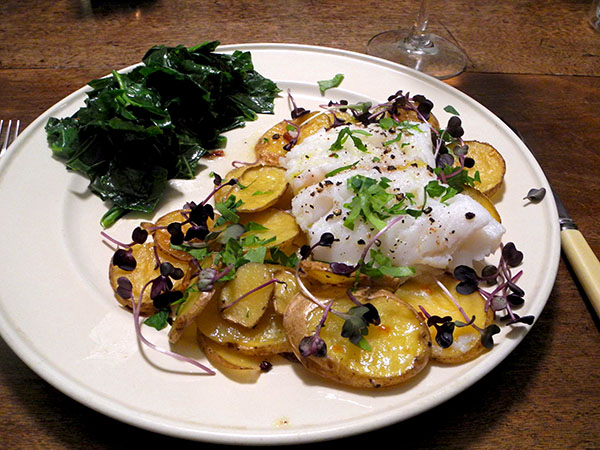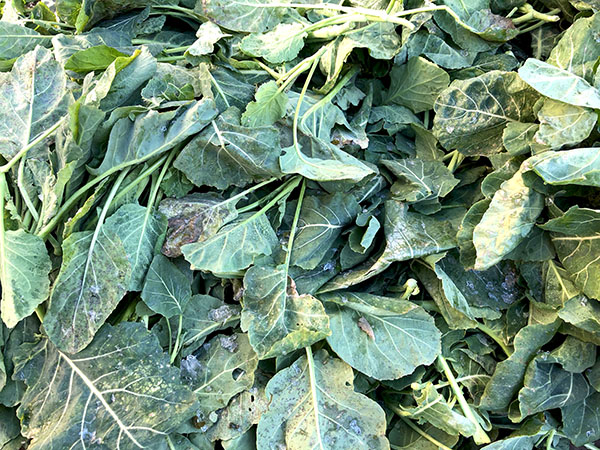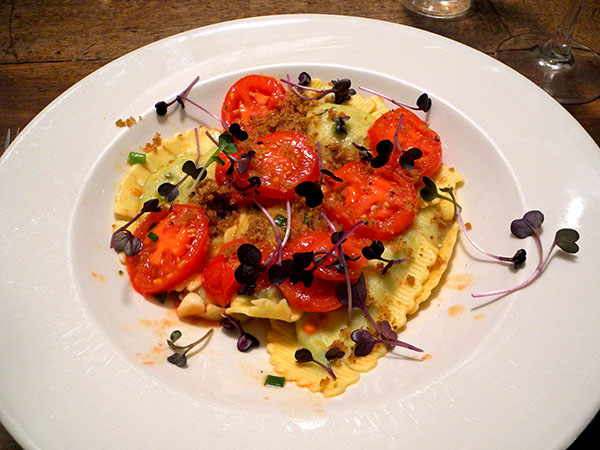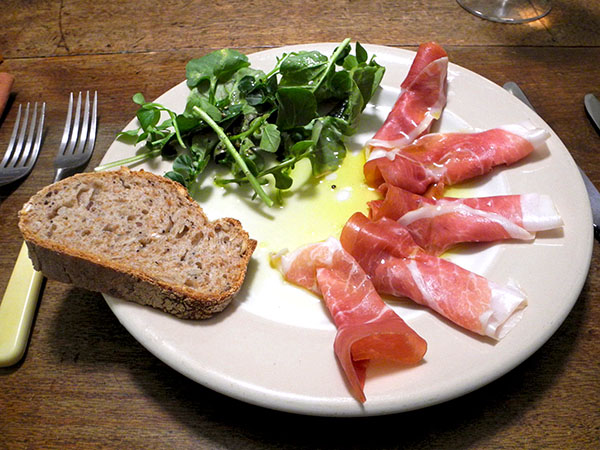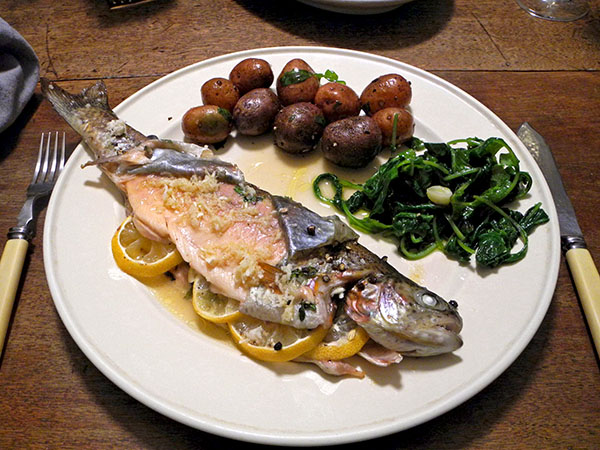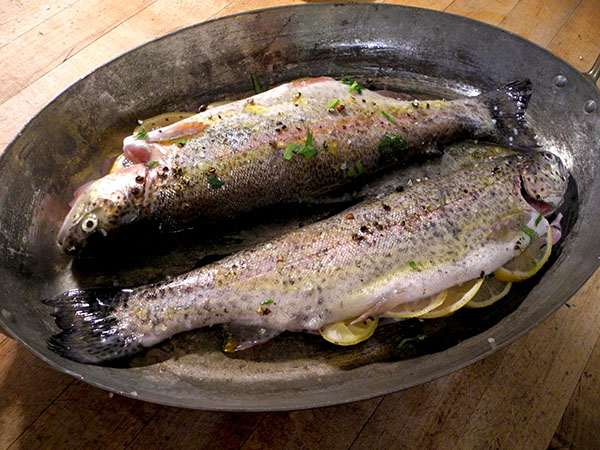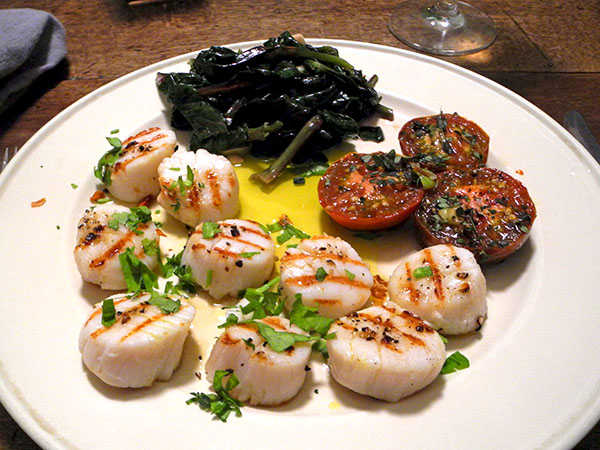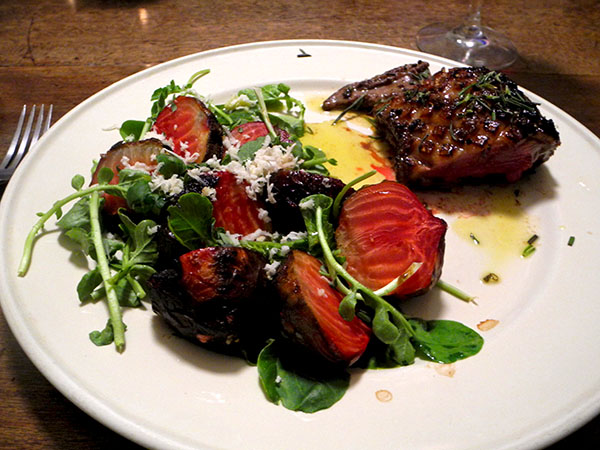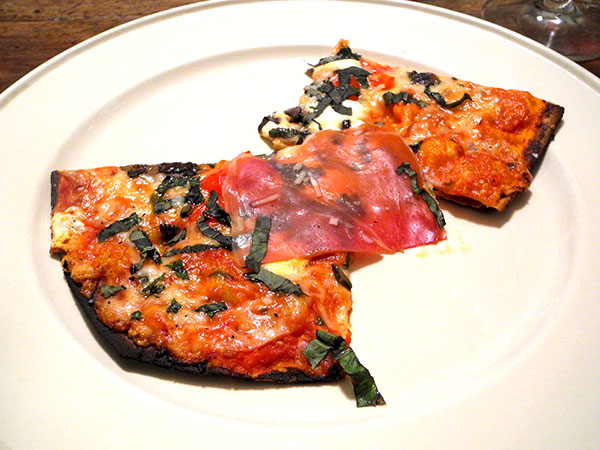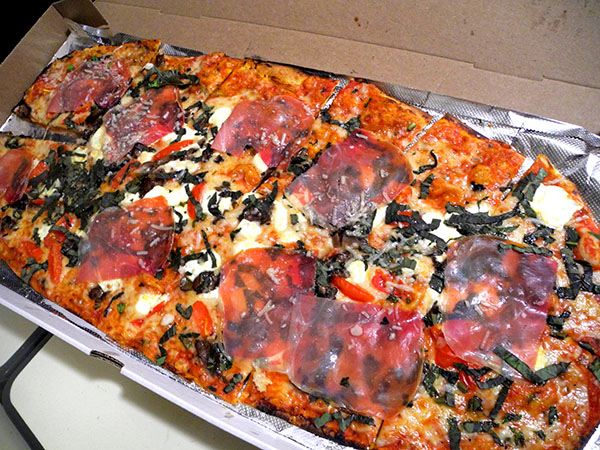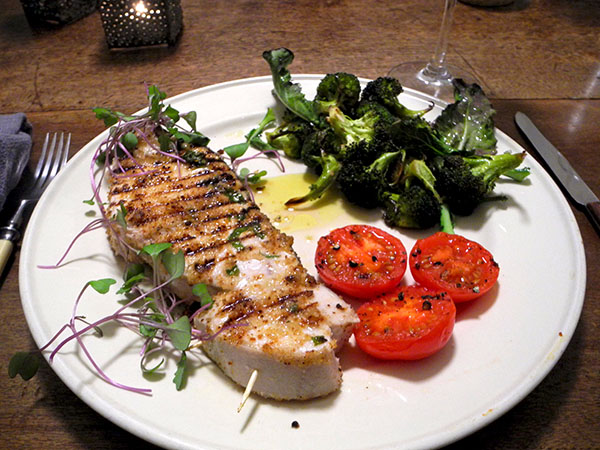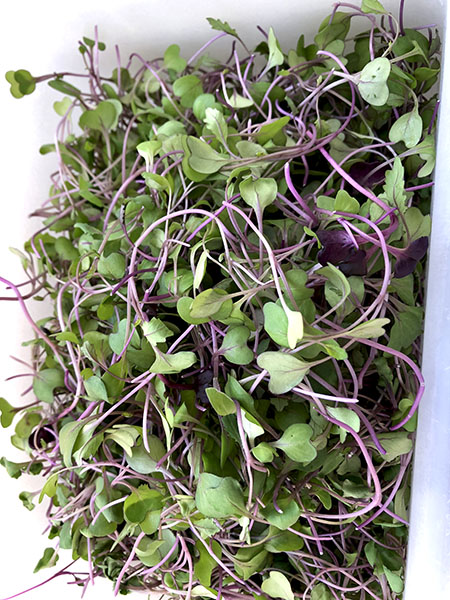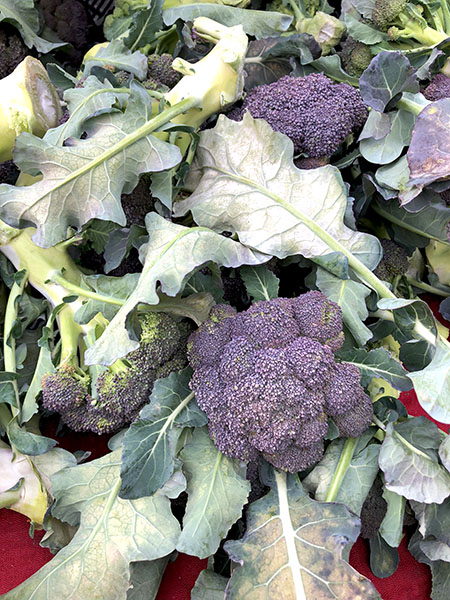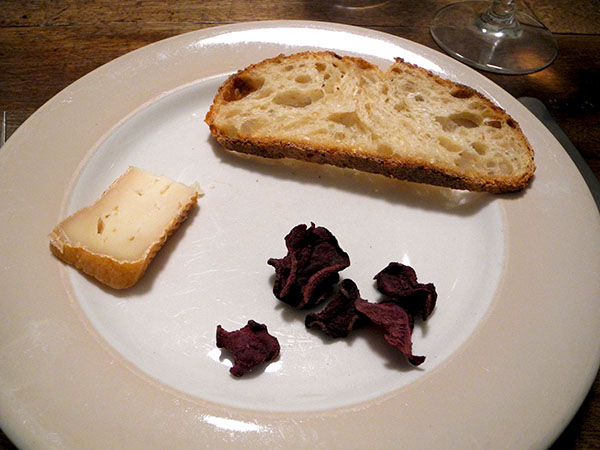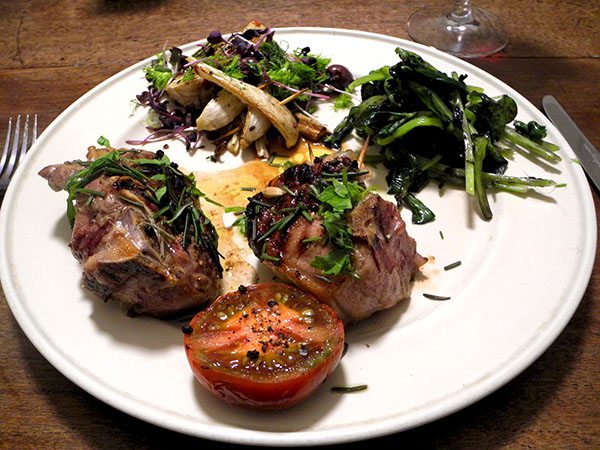
Because we had originally expected to be otherwise engaged for the evening, the plan was to improvise a simple pasta, but then the reason for doing so disappeared. At 7 o’clock it was still early enough to defrost something that would encourage me to do something with some vegetables I had that were still at their peak, so I pulled 4 lamb chops out of a packed freezer. Inside a large bowl, and after several changes of cold water, within about an hour and a half they were defrosted and ready for the grill pan.
While going through my photo stream, I just realized that both the fennel bulb and the fava greens had been the very last of their kind on the tables of their respective farmers’ stalls.
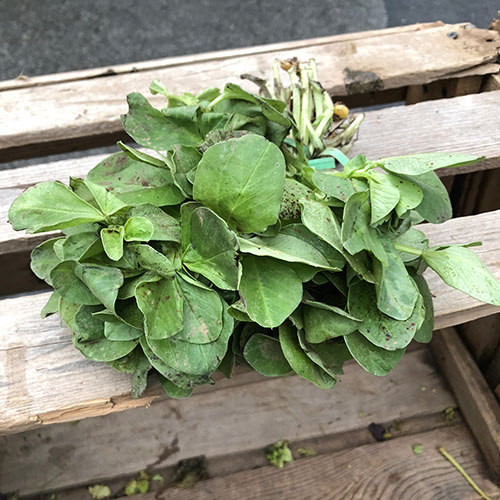
- four loin lamb chops (18 ounces total) from Shannon Brook Farm in the New York Finger Lakes, brought to room temperature, dried thoroughly, cooked on a very hot enameled cast iron grill pan for a total of 10 or 12 minutes, turning them over twice, seasoned with sea salt and freshly-ground black pepper after the first time, finished with a squeeze of juice from an organic lemon from Whole Foods Market, scattered with some chopped rosemary from S. & S.O. Farm and chopped lovage from Two Guys from Woodbridge, finished with a squeeze of an organic Whole Foods Market lemon and and a drizzle of olive oil
- one medium-size, very ripe ‘Expresso heirloom’ tomato from Cherry Lane Farm, halved, dried with a paper towel, placed on the grill pan as the chops were finishing, turned once, seasoned with sea salt and freshly-ground black pepper, arranged on the plates next to the chops and drizzled with a drop of olive oil
- one bunch of fava bean greens from Gorzynski Ornery Farm, tossed, after lots and lots of washing and trimming and draining (but worth it for the taste, and I had the time), in a tablespoon of olive oil inside a large seasoned cast iron pan over high heat, once the oil had become hot, stirred until they had quickly wilted, arranged on the plates, sprinkled with sea salt, then garnished with a bit of purple micro radish, from Two Guys from Woodbridge
- one medium fennel bulb from Stokes Farm, prepared mostly as described in this Epicurious recipe, that is, washed, trimmed, sliced into 8 vertical wedges (I followed that up with toothpicks to secure the layers), tossed, along with one-inch segments of the larger stem pieces, inside a bowl with a tablespoon of olive oil, one slightly-crushed Rocambole garlic clove from Keith”s Farm, a bit of chopped thyme, also from Stokes Farm, a crushed small piece of orange/gold dried habanada pepper, a bit less of a crumbled dried peperoncino Calabresi secchi from Buon Italia; sea salt; freshly-ground black pepper, spread onto a medium unglazed Pampered Chef oven pan and roasted at 425º for 35 minutes, turning the fennel once, a dozen pitted Gaeta olives tossed on top, the fennel turned upright and returned to the oven for 8 or so minutes more, seasoned with sea salt and freshly-ground black pepper, arranged on the plates, some of the chopped fennel fronds sprinkled on top, and the toothpicks removed [this dish can be served at room temperature, which can make it very convenient, particularly if the main actor requires a lot of attention]
- the wine was a California (Lodi) red, Karen Birmingham Zinfandel Lodi 2015, from Naked Wines
- the music was Bohislav Martinü’s Symphony No. 3, Cornelius Meister conducting the Vienna Radio Symphony Orchestra
